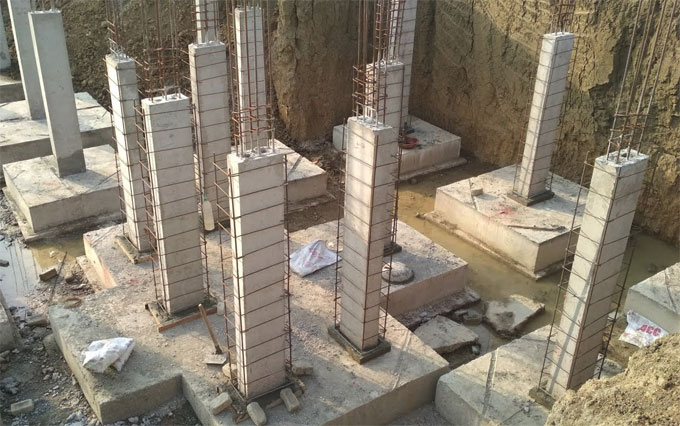
Strengthening of Columns
Column strengthening is a procedure used to include or reestablish extreme burden limits of fortified concrete columns. It is utilized for seismic retrofitting, supporting extra live burden or dead burden that is excluded from the first plan, to alleviate stresses produced by structure or development blunders, or to reestablish unique burden ability to harm basic components.
There are a few strategies which are utilized to fortify strengthened concrete columns like fortified concrete jacketing, steel jacketing, and FRP keeping or jacketing.
When strengthening R.C. Column is required
a. The heap conveyed by the column is expanded due to either expanding the quantity of floors or because of missteps in the structure.
b. The compressive quality of the concrete or the percent and kind of fortification are not as indicated by the codes' prerequisites.
c. The tendency of the column is more than the passable.
d. The settlement in the establishment is more than the passable.
Strengthening Techniques for R.C. Columns - There are three significant procedures for strengthening fortified concrete columns which are examined underneath:
1. Fortified Concrete Jacketing: It is one of the procedures used to improve or reestablish the limit of strengthened concrete columns. The size of the coat and the number and breadth of the steel bars utilized in the jacketing procedure rely upon the basic investigation that was made to the column.
At first, diminish or wipe out burdens on columns briefly in the event that it is required. This is finished by putting mechanical jacks and extra props between floors.
From that point onward, in the event that it is discovered that fortifications are eroded, expel the concrete spread and clean the steel bars utilizing a wire brush or sand blower.
At that point, cover the steel bars with an epoxy material that would forestall erosion.
In the event that diminishing burdens and cleaning support isn't required, the jacketing procedure starts by including steel connectors into the current column.
The steel connectors are included into the column by making gaps 3-4mm bigger than the measurement of the pre-owned steel connectors and 10-15cm profundity.
The dispersing of new stirrups of the coat in both the vertical and even bearings ought not be more than 50cm.
Filling the openings with a suitable epoxy material at that point embeddings the connectors into the gaps.
Adding vertical steel connectors to secure the vertical steel bars of the coat following a similar method in sync 5 and 6.
Introducing the new vertical steel bars and stirrups of the coat as per the planned measurements and widths.
Covering the current column with a proper epoxy material that would ensure the bond between the old and new concrete.
Pouring the concrete of the coat before the epoxy material dries. The concrete utilized ought to be of low shrinkage and comprises little totals, sand, concrete and extra materials to forestall shrinkage.
2. Steel Jacketing: This strategy is picked when the heaps applied to the column will be expanded, and simultaneously, expanding the cross sectional territory of the column isn't allowed.
Introducing the steel coat with the necessary size and thickness, as per the structure, and making openings to pour through them the epoxy material that would ensure the required bond between the concrete column and the steel coat.
Occupying the space between the concrete column and the steel coat with a fitting epoxy material is necessary when you do this.
At times, where the column is expected to convey bending moment second and move it effectively through the floors, one ought to introduce a steel neckline at the neck of the column by methods for jolts or an appropriate holding material.


